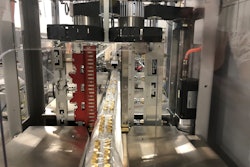
An E2Open study reveals the Coronavirus disease (COVID-19) pandemic has made it harder than ever to do business. While demand for essential items drove record sales, service levels fell from 99% to a historic low of 83%, while manufacturers shifted away from product innovation to boost production efficiencies, reduce changeovers and maximize output.
“It’s tempting to view the pandemic as an anomaly and stay the course in hope of a quick transition back to the old, pre-pandemic normal,” says Pawan Joshi, EVP of product management and strategy at E2open. “However, the unfortunate reality is that business did not return to normal. Instead, things settled into a new baseline where every aspect of business is tougher than it was in pre-pandemic times, and that was before the Delta variant and the string of droughts, floods and wildfires that have taken place in 2021.”
From E2Open:
- From a planning perspective, the pandemic made businesses inherently harder to forecast than in prior years. Demand planning error increased more than 20% and extreme error increased by more than 33%.
- The study found that companies use artificial intelligence (AI) and real-time data to understand current market realities and better predict what customers will order.
“Understanding what actually happened during the pandemic helps leaders prepare for other large-scale disruptions in the future,” says Michael Farlekas, president and CEO at E2open. “Being better prepared is a crucial factor in building resilient processes, being proactive rather than reactive, supporting the communities you serve during trying times and emerging stronger than before.”
“Today’s supply chain processes span internal operations, multiple tiers of upstream and downstream trading partners, and reach down to the end consumer,” continued Farlekas. “While these are all inherently linked and interdependent, few corporations have sufficiently invested in connecting end-to-end processes and systematically leveraging current information and AI to build resilience. This is an area of strong potential for most firms, to help them better manage future disruptions and capitalize on the hidden opportunities disruption can bring.”




















